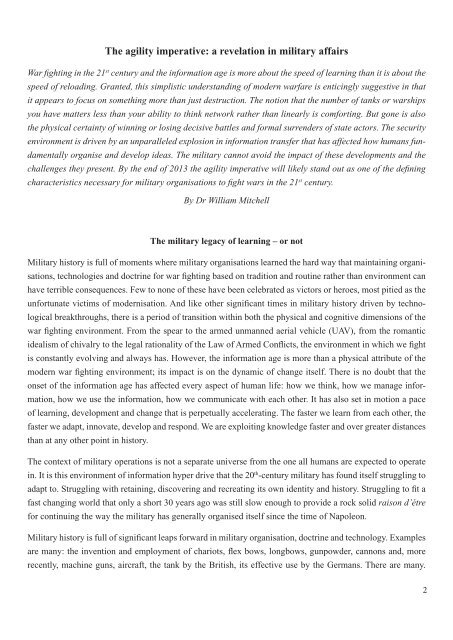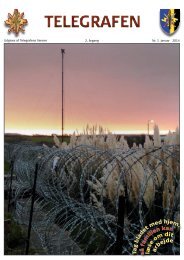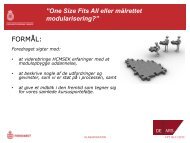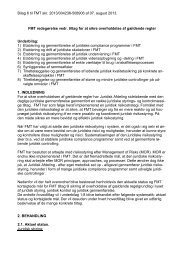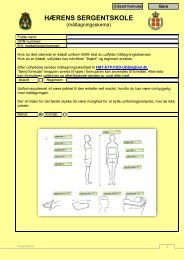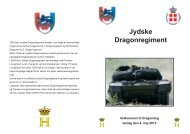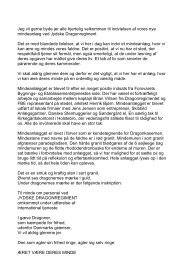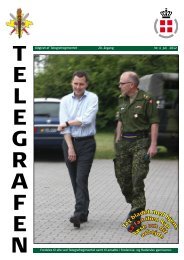The agility imperative - a revelation in military affairs.indd
The agility imperative - a revelation in military affairs.indd
The agility imperative - a revelation in military affairs.indd
Create successful ePaper yourself
Turn your PDF publications into a flip-book with our unique Google optimized e-Paper software.
<strong>The</strong> <strong>agility</strong> <strong>imperative</strong>: a <strong>revelation</strong> <strong>in</strong> <strong>military</strong> <strong>affairs</strong><br />
War fi ght<strong>in</strong>g <strong>in</strong> the 21 st century and the <strong>in</strong>formation age is more about the speed of learn<strong>in</strong>g than it is about the<br />
speed of reload<strong>in</strong>g. Granted, this simplistic understand<strong>in</strong>g of modern warfare is entic<strong>in</strong>gly suggestive <strong>in</strong> that<br />
it appears to focus on someth<strong>in</strong>g more than just destruction. <strong>The</strong> notion that the number of tanks or warships<br />
you have matters less than your ability to th<strong>in</strong>k network rather than l<strong>in</strong>early is comfort<strong>in</strong>g. But gone is also<br />
the physical certa<strong>in</strong>ty of w<strong>in</strong>n<strong>in</strong>g or los<strong>in</strong>g decisive battles and formal surrenders of state actors. <strong>The</strong> security<br />
environment is driven by an unparalleled explosion <strong>in</strong> <strong>in</strong>formation transfer that has affected how humans fundamentally<br />
organise and develop ideas. <strong>The</strong> <strong>military</strong> cannot avoid the impact of these developments and the<br />
challenges they present. By the end of 2013 the <strong>agility</strong> <strong>imperative</strong> will likely stand out as one of the defi n<strong>in</strong>g<br />
characteristics necessary for <strong>military</strong> organisations to fi ght wars <strong>in</strong> the 21 st century.<br />
By Dr William Mitchell<br />
<strong>The</strong> <strong>military</strong> legacy of learn<strong>in</strong>g – or not<br />
Military history is full of moments where <strong>military</strong> organisations learned the hard way that ma<strong>in</strong>ta<strong>in</strong><strong>in</strong>g organisations,<br />
technologies and doctr<strong>in</strong>e for war fight<strong>in</strong>g based on tradition and rout<strong>in</strong>e rather than environment can<br />
have terrible consequences. Few to none of these have been celebrated as victors or heroes, most pitied as the<br />
unfortunate victims of modernisation. And like other significant times <strong>in</strong> <strong>military</strong> history driven by technological<br />
breakthroughs, there is a period of transition with<strong>in</strong> both the physical and cognitive dimensions of the<br />
war fight<strong>in</strong>g environment. From the spear to the armed unmanned aerial vehicle (UAV), from the romantic<br />
idealism of chivalry to the legal rationality of the Law of Armed Conflicts, the environment <strong>in</strong> which we fight<br />
is constantly evolv<strong>in</strong>g and always has. However, the <strong>in</strong>formation age is more than a physical attribute of the<br />
modern war fight<strong>in</strong>g environment; its impact is on the dynamic of change itself. <strong>The</strong>re is no doubt that the<br />
onset of the <strong>in</strong>formation age has affected every aspect of human life: how we th<strong>in</strong>k, how we manage <strong>in</strong>formation,<br />
how we use the <strong>in</strong>formation, how we communicate with each other. It has also set <strong>in</strong> motion a pace<br />
of learn<strong>in</strong>g, development and change that is perpetually accelerat<strong>in</strong>g. <strong>The</strong> faster we learn from each other, the<br />
faster we adapt, <strong>in</strong>novate, develop and respond. We are exploit<strong>in</strong>g knowledge faster and over greater distances<br />
than at any other po<strong>in</strong>t <strong>in</strong> history.<br />
<strong>The</strong> context of <strong>military</strong> operations is not a separate universe from the one all humans are expected to operate<br />
<strong>in</strong>. It is this environment of <strong>in</strong>formation hyper drive that the 20 th -century <strong>military</strong> has found itself struggl<strong>in</strong>g to<br />
adapt to. Struggl<strong>in</strong>g with reta<strong>in</strong><strong>in</strong>g, discover<strong>in</strong>g and recreat<strong>in</strong>g its own identity and history. Struggl<strong>in</strong>g to fit a<br />
fast chang<strong>in</strong>g world that only a short 30 years ago was still slow enough to provide a rock solid raison d’étre<br />
for cont<strong>in</strong>u<strong>in</strong>g the way the <strong>military</strong> has generally organised itself s<strong>in</strong>ce the time of Napoleon.<br />
Military history is full of significant leaps forward <strong>in</strong> <strong>military</strong> organisation, doctr<strong>in</strong>e and technology. Examples<br />
are many: the <strong>in</strong>vention and employment of chariots, flex bows, longbows, gunpowder, cannons and, more<br />
recently, mach<strong>in</strong>e guns, aircraft, the tank by the British, its effective use by the Germans. <strong>The</strong>re are many.<br />
2


